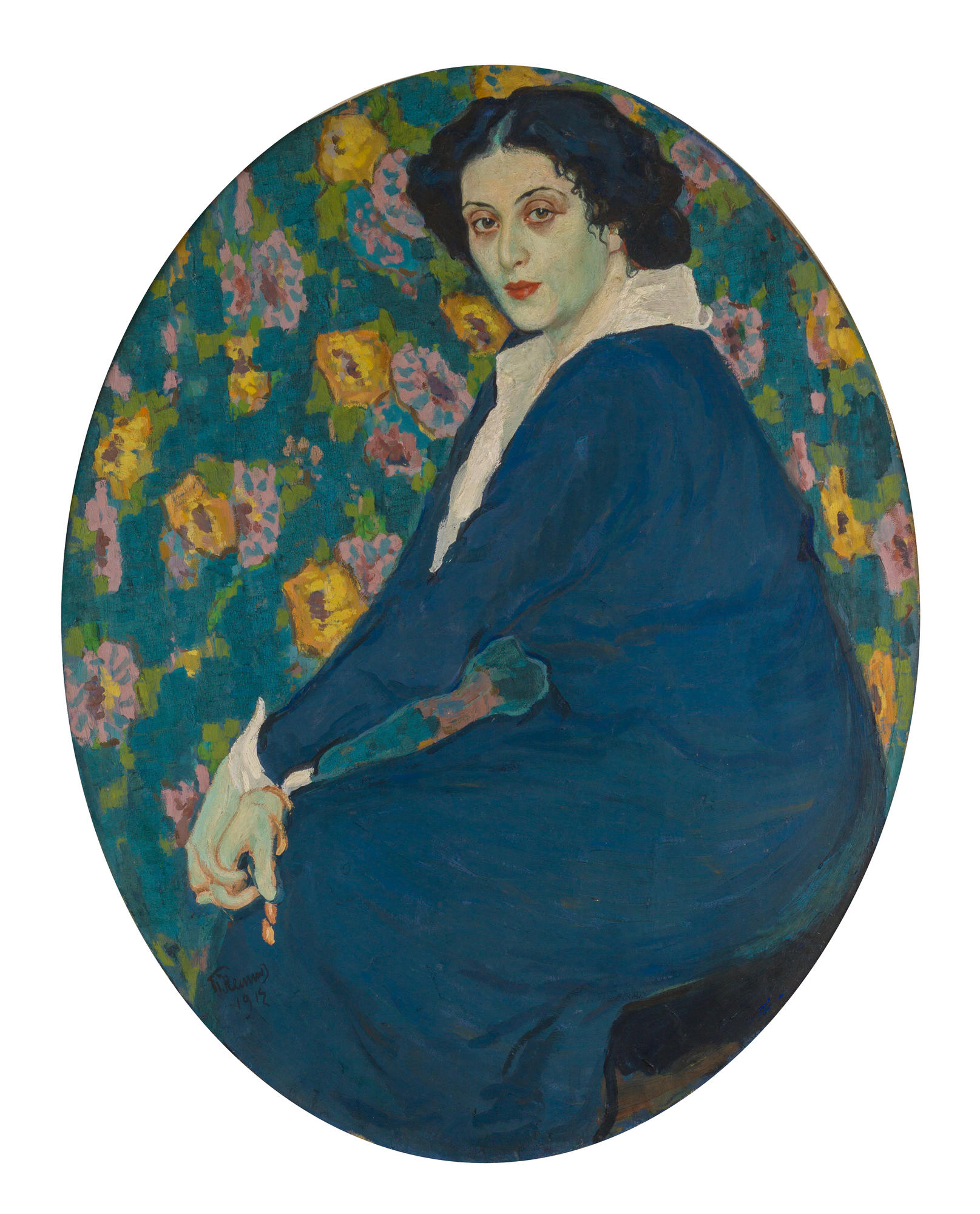The late 19th century brought to the world the unique phenomenon of the Modern Style — an artistic movement characterized by decorative effects, flowing lines, deep color palette. England is considered the home of the Modern Style, however it appeared simultaneously in other countries under different names. It France it was Art Nouveau, in Italy — Style Liberty, in Poland — Secessionism.
Irrespective of how Art Nouveau artists positioned themselves, their art had a lot in common. For instance, mysterious images of charmingly elegant women. The artists did not attempt to accurately render features of female faces, they strove to portray their perception. Therefore, often the figures and faces of their models were transformed, which only emphasized their attractiveness and graciousness.
Portrait of a Lady in Blue painted by Pyotr Karelin in 1912 is a typical example of Russian Art Nouveau of the early 20th century. The figure is painted with slight carelessness, however the woman commands attention by her languor and demoniac beauty. The effect is augmented by bright bluish-green spots that look like skillfully placed accents.
The bluish-green dress of the model and wallpaper of the same colors act on the viewer’s subconscious forming a range of associations with a stormy sky or the sea before a storm. The woman does not look ominous, but there is something unexplainably alarming in her features. The dark circles under her eyes and pale, almost waxy skin strengthen the effect. She seems to be a guest from another world who brought an important message that can be read in her intelligent dark eyes and ironically upturned corners of her mouth.
Pyotr Ivanovich Kelin is a Russian artist, who came to conquer Moscow at the age of twenty from the Ryazan Governorate and very soon asserted himself as a talented portrait painter. He tried landscapes and genre painting but was his absolute best in portrait art. The painter adhered to the main principle of Art Nouveau in his art — convey not so much the outer resemblance, as the impression that the person produces on others.
Before the revolution, Pyotr Kelin established his own studio where he taught young artists the basics of painting and composition. After 1917 he taught in the Higher Art and Technical Studios. He was commissioned by government to paint number of portraits of state officials, scientists and writers, including Joseph Stalin, Anatoly Lunacharsky, Vladimir Mayakovsky.
Irrespective of how Art Nouveau artists positioned themselves, their art had a lot in common. For instance, mysterious images of charmingly elegant women. The artists did not attempt to accurately render features of female faces, they strove to portray their perception. Therefore, often the figures and faces of their models were transformed, which only emphasized their attractiveness and graciousness.
Portrait of a Lady in Blue painted by Pyotr Karelin in 1912 is a typical example of Russian Art Nouveau of the early 20th century. The figure is painted with slight carelessness, however the woman commands attention by her languor and demoniac beauty. The effect is augmented by bright bluish-green spots that look like skillfully placed accents.
The bluish-green dress of the model and wallpaper of the same colors act on the viewer’s subconscious forming a range of associations with a stormy sky or the sea before a storm. The woman does not look ominous, but there is something unexplainably alarming in her features. The dark circles under her eyes and pale, almost waxy skin strengthen the effect. She seems to be a guest from another world who brought an important message that can be read in her intelligent dark eyes and ironically upturned corners of her mouth.
Pyotr Ivanovich Kelin is a Russian artist, who came to conquer Moscow at the age of twenty from the Ryazan Governorate and very soon asserted himself as a talented portrait painter. He tried landscapes and genre painting but was his absolute best in portrait art. The painter adhered to the main principle of Art Nouveau in his art — convey not so much the outer resemblance, as the impression that the person produces on others.
Before the revolution, Pyotr Kelin established his own studio where he taught young artists the basics of painting and composition. After 1917 he taught in the Higher Art and Technical Studios. He was commissioned by government to paint number of portraits of state officials, scientists and writers, including Joseph Stalin, Anatoly Lunacharsky, Vladimir Mayakovsky.



